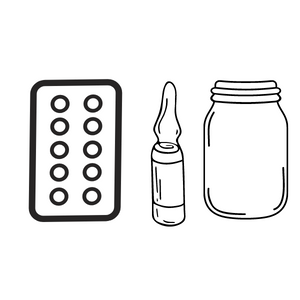Packaging material in pharmaceutical industry plays an important role in the pharmaceutical industry. They help protect pharmaceutical products against different external threats.
Packaging is a critical and essential process in pharma industry. It is used to enclosed a pharma product with suitable packaging material for various purposes, primarily to protect it. it also serves other functions, such as marketing and patient information. Material for the packaging determines the success of the process, and is critically selected to meet product compatibility, regulatory compliance, quality and product safety.
What are Packaging Material in pharmaceutical Industry
Packaging material in pharmaceutical industry is a packing made up of suitable material to pack different types of pharma products. It fully encloses the product in it from all sides, and becomes airtight, sealed, and protected. it prevents ingression of contamination, air , foreign particles , dust, dirt and microorganisms.
Specialized packaging materials also enables pharma product to sustain excessive hot and cold temperatures, enabling them to be transported through and used in extreme temperatures, without affecting their chemical and therapeutic effects.

There are two important considerations when selecting a packaging material for any pharma product.
- The packaging material does not harm or change the pharma product specifications.
- The pharma product must not damage or alter the packaging material specifications.
Applications of Packaging material in pharmaceutical industry
Let’s discuss some diverse applications of packaging material in the pharmaceutical industry
Product Containment
Product containment means delivering the product to its end users, such as patients or doctors, isolated from external harmful threats and physical damage to prevent altering the product specifications. The packaging material helps protect ingression of foreign bodies into the packaging material.
This becomes critical when the point of delivery has different environmental conditions (temperature & humidity), than the manufacturing facility
Product Protection
The packaging material helps retain the product’s properties, potency, and quality and prevent product deterioration, as described below.
Light: Some pharma products are sensitive to light, and degrade when exposed to light, resulting in impurities development, making the product un-for and un-safe for human consumptions. To protect light sensitive products, there are specialized packaging materials that restrict the light passage, through it.
Moisture: Moisture is a vapor form of water and is able to react when come in moisture. Excessive water or moisture content is dangerous for finished pharma product, that can change or alter chemical & physical characteristics. Packaging material protects the pharma product from moisture by sealing it making it waterproof. The waterproofing prevents the penetration of moisture inside the packaging material, and subsequently affecting the product.
Contamination: One major source of contamination in pharma product is the un-controlled air, outside of clean, pharma grade environment. Because, since it is not filtered, it contains harmful particles including the microorganism. When this air comes in contact with the product, it can contaminate the product, especially with the oral products.
Packaging material protects the product from contamination by preventing air from getting inside. The packaging material seals the product and prevents product contamination.
Physical Damage: Packaging material helps in protecting pharma product from physical damage. It forms a physical hardened layer that protects against physical damage, jerk or shock. during the entire supply chain life cycle, such as transportation, distribution, and in pharmacies.
Product Information
Packaging also serves as a way to inform customer about various aspects of pharma drug product. it is a mechanism through which pharma manufacturers convey patient specific knowledge to them.
Packaging material is used to convey this information though various ways. For example, labels on the packaging material and leaflets. Some contents of information include the following
- Product identification, such as name, batch number, and serial number
- Description of product and chemical composition
- Directions for use
- Manufacturing and expiry information
Primary and Secondary Packaging material in pharmaceutical industry
When packing a pharma product in packaging material, there are two different types of configuration – Primary Packaging and Secondary Packaging. These two differ in the way the product is packed and comes in contact with the packaging material.
Primary Packaging Material
Primary packaging material comes in direct contact with the pharma product. They directly protect the pharma product from various external factors.
Since primary packaging comes in direct contact with the product, they are carefully selected to avoid reacting and harming the product. The primary packaging material should not alter the product characteristics, nor should the product’s chemical composition affect the packaging material.
Examples of primary packaging material include Bottles, Ampoules, and Blisters.
Secondary Packaging Material
Secondary packaging material does not come in direct contact with the pharma product. It is used to pack product that is packed with primary packaging material. The main purpose of secondary packaging material is to hold the primary packed product units together.
Examples of secondary packaging material include cardboard boxes and cartons.
Types of Packaging material in pharmaceutical industry
Some common types of packaging material in pharmaceuticals include the following
Glass
Glass is a common packaging material in the pharmaceutical industry. They are commonly used for oral and injectables. Examples of glass packaging material include Ampoules, Vials, and Bottles
There are three standards of glass made for pharmaceutical applications – Type I, II & III.
Type I is natural glass and is the least reactive. It is made up of borosilicate and has good chemical resistance.
Type II is used for intravenous administration medication. This type is manufactured by treating the internal surface of a glass.
Type III is known as soda-lime glass and is suitable for less critical products such as Oral Solid Dosage.
Metals
They are used for non-parenteral products. An example includes tubes, blister packs, and cans. Common metal includes Aluminum and Stainless steel because they provide excellent corrosion resistance and ensure product safety.
Plastics
These non-metallic packaging materials mainly used for nags for parenteral solutions and squeezable bottles for eye, ear, and nose drops. They are also used for pre-filled syringes, sachets, and strip packs

